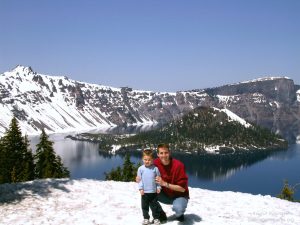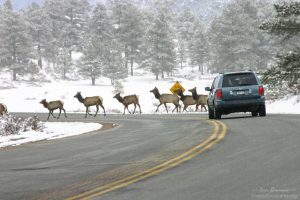For most of us National Park fans who live where there are seasons, winter is a time to stay inside and plan trips for next summer. Not surprisingly, the vast majority of people visit the parks in summer, but winter can actually be a great time to experience a National Park.
Of course, there are plenty of parks with very hospitable winters. Island parks like Haleakala, Hawaii Volcanoes, American Samoa, Virgin Islands and Dry Tortugas are nice year round. Other parks in hot areas like Saguaro NP in southern Arizona and Everglades NP in Florida actually have more tolerable temperatures in the winter making them ideal candidates for a visit. But what about those parks in the north and west like Glacier, Yosemite, Yellowstone and Rocky Mountain?
Winter can be a magical time in any National Park, and you’ll get to see the park in a way few ever do. Several advantages also await those brave enough to venture out into the cold. For those parks most traveled in the summer, winter offers a break from the normal crowds and traffic. You may even feel like you’ve got the park to yourself, something rarely possible in the summer. Winter also brings some of the wildlife out of the hills and closer to the roads, particularly grazing animals like elk, moose and deer, giving you a great opportunity for some up-close photos. Winter scenery photos can also be dramatic with snow-covered vistas and cold, clear skies adding contrast to brightly colored rocks and deep evergreens. Winter also offers unique sporting experiences for those hearty enough to try them. Snowshoeing, cross-country skiing and snowmobiling are options in some parks and allow you to go where few will venture this time of year. Finally, some parks offer reduced entrance fees in the winter. For example, I was able to visit Denali with no fee in the winter, and there was still plenty to see.
Of course, some additional planning is required to ensure a successful trip. First, check the weather to make sure you’re not going to get stuck in a blizzard or ice storm–there will be fewer passers-by and rangers available to help you if you get stuck. You’ll also want to check on local sunrise and sunset times–you’ll have less daylight to visit the park. Also, check with the National Park Service (nps.gov) to get the latest status on road closures. Many parks like Rocky Mountain and Crater Lake have major sections of road that are only open in summer. Every park has at least some access, but don’t be surprised if an entrance is closed or you can’t drive all the way through the park. You’ll also want to check to see whether or not a key attraction is open. For example, Cliff Palace, the largest set of ruins at Mesa Verde NP, is closed in the winter. Because of the increased uncertainty in the weather and more potential to have events beyond your control spoil your plans in the winter, I’d recommend visiting a nearby park instead of making big plans to travel cross-country to one of the northern parks.
If you’re willing to bundle up and plan around a few obstacles, you can have a great time in a park this winter, so give it a try!



